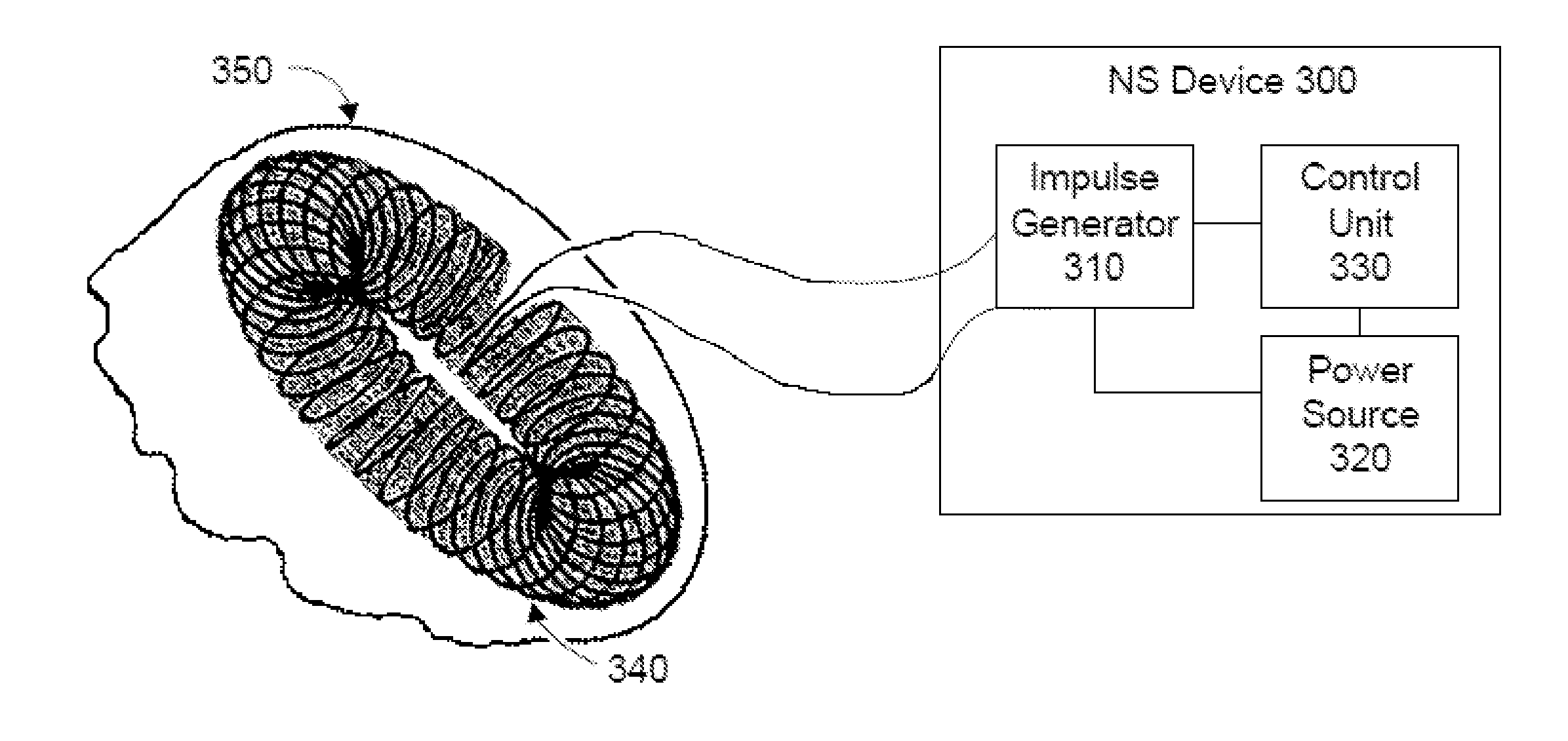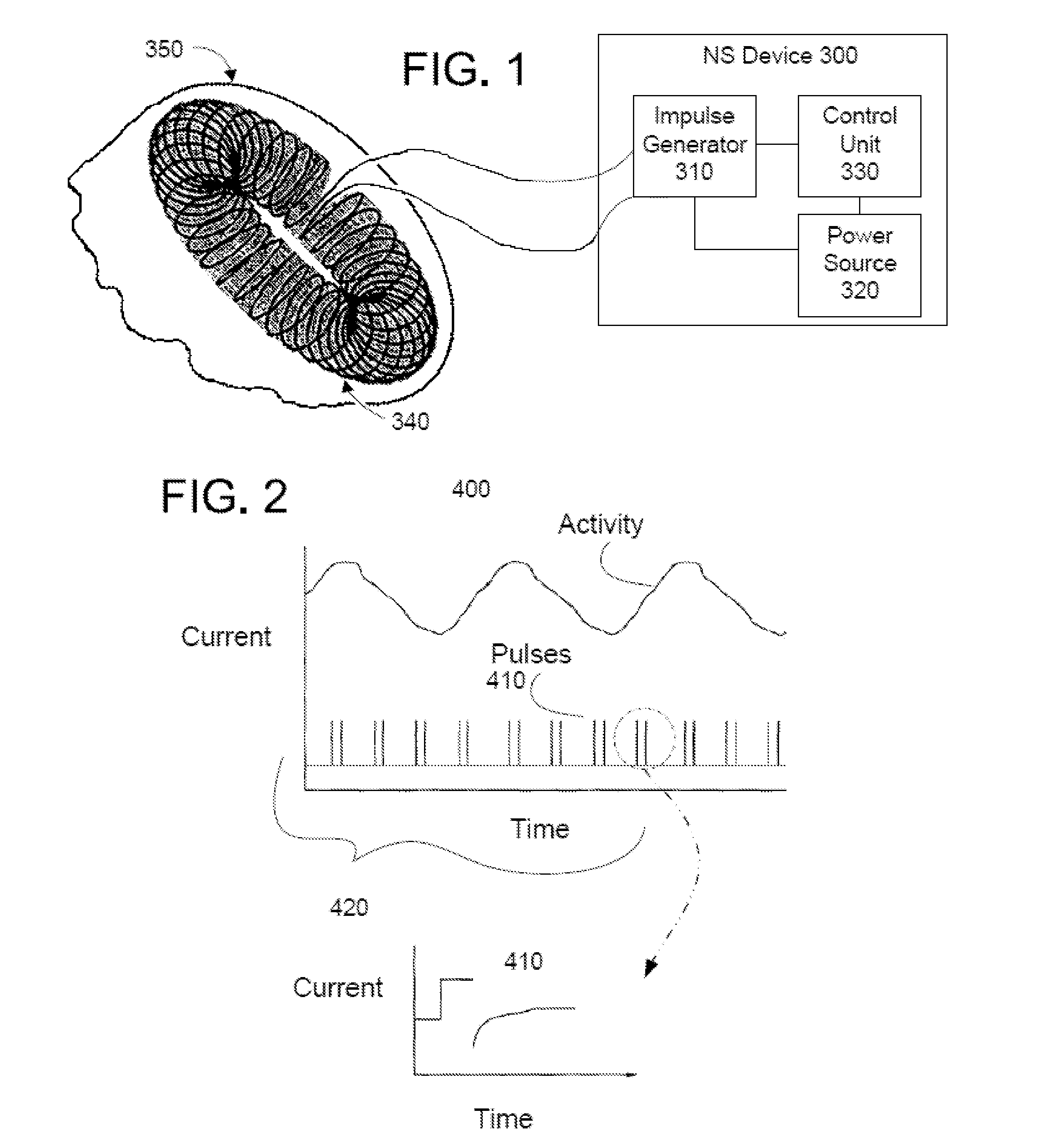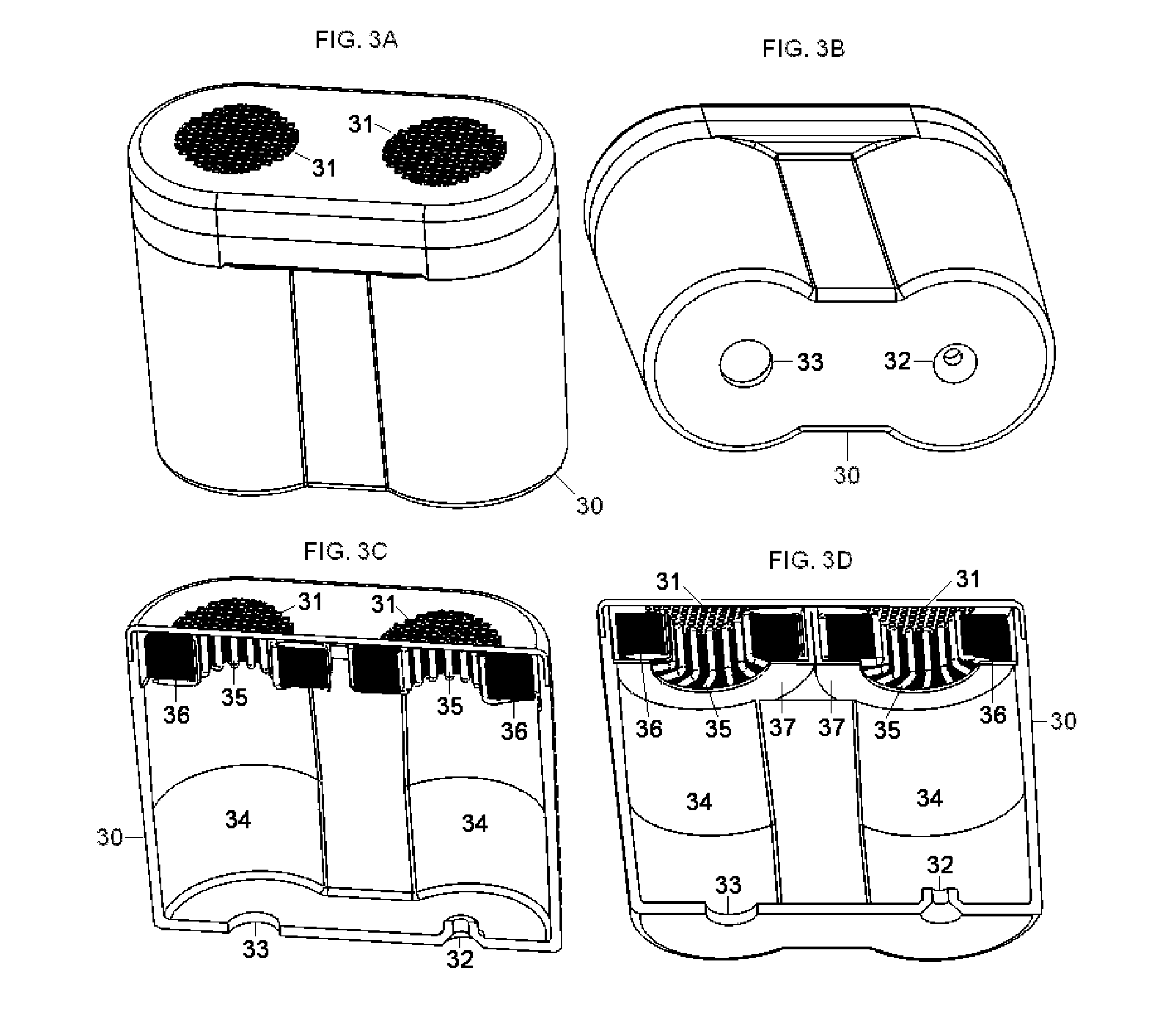Non-invasive treatment of neurodegenerative diseases
a neurodegenerative disease and non-invasive technology, applied in the field of delivery of energy impulses, can solve the problems of inability to treat patients with neurodegenerative diseases, and inability to fully understand the effects of medicinal approaches, so as to improve the anti-inflammatory competence of cytokines, reduce neuroinflammation, and reduce inflammation
- Summary
- Abstract
- Description
- Claims
- Application Information
AI Technical Summary
Benefits of technology
Problems solved by technology
Method used
Image
Examples
Embodiment Construction
[0049]In the present invention, energy is transmitted non-invasively to a patient. In one of the preferred embodiments, a time-varying magnetic field originating outside of a patient is generated, such that the magnetic field induces an electromagnetic field and / or eddy currents within tissue of the patient. The invention is particularly useful for inducing applied electrical impulses that interact with the signals of one or more nerves, or muscles, to achieve a therapeutic result. In particular, the present disclosure describes devices and methods to treat neurodegenerative diseases, including Alzheimer's disease, Parkinson's disease, multiple sclerosis, postoperative cognitive dysfunction, and postoperative delirium.
[0050]In an exemplary embodiment, the present invention includes methods and devices for inducing, by a time-varying magnetic field, electrical fields and current within tissue, in accordance with Faraday's law of induction. Magnetic stimulation is non-invasive because...
PUM
 Login to View More
Login to View More Abstract
Description
Claims
Application Information
 Login to View More
Login to View More - R&D
- Intellectual Property
- Life Sciences
- Materials
- Tech Scout
- Unparalleled Data Quality
- Higher Quality Content
- 60% Fewer Hallucinations
Browse by: Latest US Patents, China's latest patents, Technical Efficacy Thesaurus, Application Domain, Technology Topic, Popular Technical Reports.
© 2025 PatSnap. All rights reserved.Legal|Privacy policy|Modern Slavery Act Transparency Statement|Sitemap|About US| Contact US: help@patsnap.com



